Search the Blog
Categories
- Books & Reading
- Broadband Buzz
- Census
- Education & Training
- General
- Grants
- Information Resources
- Library Management
- Nebraska Center for the Book
- Nebraska Memories
- Now hiring @ your library
- Preservation
- Pretty Sweet Tech
- Programming
- Public Library Boards of Trustees
- Public Relations
- Talking Book & Braille Service (TBBS)
- Technology
- Uncategorized
- What's Up Doc / Govdocs
- Youth Services
Archives
Subscribe
Category Archives: Information Resources
CCC Library Information Services Classes

Central Community College announces class for the Library Information Services program for Spring 2021.
Enrollment opens November 12, 2020 for classes beginning January 11, 2021. All classes are online and can be applied to a Central Community College Associate Degree.
See details of classes and registration information at https://www.cccneb.edu/library/
Call for Speakers: Big Talk From Small Libraries 2021

The Call for Speakers for the 10th annual Big Talk From Small Libraries is now open!
This free one-day online conference is aimed at librarians from small libraries; the smaller the better! We are looking for speakers from small libraries or speakers who directly work with small libraries. Small libraries of all types – public, academic, school, museum, special, etc. – are encouraged to submit a proposal. We’re looking for seven 50-minute presentations and four 10-minute “lightning round” presentations.
Do you offer a service or program at your small library that other librarians might like to hear about? Have you implemented a new (or old) technology, hosted an event, partnered with others in your community, or just done something really cool? The Big Talk From Small Libraries online conference gives you the opportunity to share what you’ve done, while learning what your colleagues in other small libraries are doing.
Here are some possible topics to get you thinking:
- Unique Libraries
- Special Collections
- New buildings
- Fundraising
- Improved Workflows
- Staff Development
- Advocacy Efforts
- Community Partnerships
- That great thing you’re doing at your library!
Submit your proposal by Friday, January 8, 2021.
Speakers from libraries serving fewer than 10,000 people will be preferred, but presentations from libraries with larger service populations will be considered.
Big Talk From Small Libraries 2021 will be held on Friday, February 26, 2021 between 8:45 a.m. and 5:00 p.m. (CT) via the GoToWebinar online meeting service. Speakers will present their programs from their own desktops. The schedule will accommodate speakers’ time-zones.
This conference is organized and hosted by the Nebraska Library Commission and is co-sponsored by the Association for Rural & Small Libraries.
Photo by Patrick Fore on Unsplash
Nebraska Coronavirus Relief Fund (CRF) Program

Online Program Information & Related Guidelines
As a result of the COVID-19 pandemic, entities across the government, businesses, and non-profit sectors continue to experience significant and unprecedented challenges to their operating capacity and sustainability. To help mitigate the impact of economic losses stemming from declining revenues, increased expenses, and employee lay offs or furloughs, the State of Nebraska has established a series of programs to help:
- Stabilize impacted businesses and livestock producers; and
- Support community institutions to meet critical needs such as food security, shelter, and mental health care;
This phase of funding will be available for select programs via online application beginning October 21, 2020:DHHS Administered Programs
- Stabilization Grant for Charitable Organizations and Licensed Providers, Round 2
- Healthy Places Grant for Centers of Worship, Round 2
DED Administered Programs
- Small Business Stabilization Program, Round 2
- Livestock Producers Stabilization Program, Round 2
- Hotels and Convention Centers Stabilization Program
- Event Centers and Sports Arenas Stabilization Program
- Restaurants and Bars Stabilization Program
- Licensed Personal Service Business Stabilization Program
- Movie Theatre Stabilization Program
Contact Center Assistance
Beginning October 21, 2020 from 10 AM to 7 PM CT, Contact Agents will be available to address your questions about this next round of funding. A toll-free number will be released on this website at that time.
From October 22, the Contact Agents will be available Monday to Friday from 7am to 7pm CT.
2020 Census Update: 99.98% Complete Nationwide
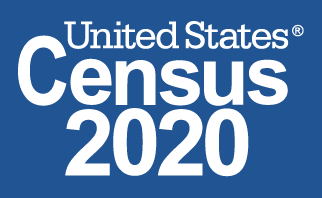
According to updated numbers released by the U.S. Census Bureau today, 99.98% of all housing units and addresses nationwide were accounted for in the 2020 Census as of the end of self-response and field data collection operations on Oct. 15, 2020. In all states, the District of Columbia and the Commonwealth of Puerto Rico, more than 99% of all addresses have been accounted for, and in all but one state that number tops 99.9%.
“The 2020 Census faced challenges like no other decennial census in living memory,” said Secretary of Commerce Wilbur L. Ross, Jr. “Achieving these metrics in the face of severe weather events and a global pandemic is a testament to the determination and ingenuity of the hundreds of thousands of dedicated women and men who worked on the 2020 Census.”
Compared to the final self-response rate of 66.5% for the 2010 Census, 67% were accounted for through self-response to date, with the rest having been accounted for through our Nonresponse Followup (NRFU) operation.
“America stepped up and answered the call: shape your future by responding to the 2020 Census,” said Dr. Steven Dillingham, Director of the Census Bureau. “Generally, better data comes from self-response, but after a decade of global decline in census and survey participation along with the challenges presented to communities by COVID-19, we had not expected to exceed the 2010 self-response rate. That we did is a testament to the American people, our nearly 400,000 national and community partners, and very importantly our staff.”
“The Census Bureau was able to meet and overcome many challenges because of our innovative design and use of new technology, but it could not be done without the unflinching resolve of our staff,” Dillingham continued. “We thank everyone on the team for their contributions, from the census takers and field staff going the extra mile to reach those hardest to count, to the dedicated operational leadership at headquarters and around the country working around the clock to maintain and protect our systems, process the data, oversee the operation, and get the word out about the importance of the 2020 Census.”
“We are especially proud of the hard work done to bring the state of Louisiana over 99% complete despite the devastating effects of hurricanes Laura and Delta, and of the partnership with American Indian and Alaska Native tribal governments to get 99.77% of the NRFU workload on their lands done, despite closures due to the pandemic.”
“Hundreds of millions of people were counted in the 2020 Census, and statisticians and data quality experts are now busy making sure everyone was counted once, only once, and in the right place,” Dillingham continued. “The Census Bureau will use the best methodologies available to resolve the very small number of unresolved addresses and to ensure that our data products are accurate.”
Each census, the Census Bureau produces coverage estimates and conduct extensive assessments that we share with the public. The completion rates are just early indicators. For more information on the 2020 Census, including use of proxy and administrative records, please see our updated FAQs.
The Census Bureau is working hard to process the data in order to deliver complete and accurate state population counts as close as possible to the Dec. 31, 2020, statutory deadline.
Data collection for the 2020 Census ended at 11:59 p.m. Hawaii Standard Time on Oct. 15, 2020 (5:59 a.m. EDT). Paper responses are still arriving and will be processed if postmarked by October 15, and received at the processing center no later than October 22.
For more information, visit 2020census.gov.
Posted in Books & Reading, Census, Education & Training, General, Information Resources, What's Up Doc / Govdocs
Tagged census
Leave a comment
How Much Do Libraries Benefit the Community?

Did you ever wonder what how valuable libraries are to communities? This week, let’s take a look at some of the basic services libraries provide, and imagine a community where a library (gasp!) doesn’t exist. What would residents have to pay for those services in the absence of the library? Well, those are hard numbers to come up with, as libraries often provide valuable programs and services that are difficult to quantify. However, we have tried, and came up with this summary for the entire state. Many thanks to my colleague, Allana Novotny, for all of her assistance.
To summarize this handout a bit, we looked at the total local government revenue, or cost to taxpayers, and it should be noted that the library data we used is from the most recent annual public library survey, fiscal year 2019. Next, we looked at the population of the service areas of public libraries within the state, which is a bit less than the overall population of Nebraska, because there are some areas that are unserved by a public library. This gave us an annual cost to each taxpayer of $41. Finally, we looked at the number of times that things in the library were used (e.g. books, electronic books, Audiobooks, computers, and Wi-Fi uses) and assigned a conservative value to those things. For instance, if someone didn’t have access to a book and had to purchase it on their own, what would they typically have to pay for it.
It should be noted (as the handout mentions on page 2) that in addition to the things itemized, libraries provide numerous other programs and services that are valuable but difficult to quantify. While the handout lists the number of programs offered and attendees in FY2019, page 2 also lists a number of other things that libraries often provide that are valuable to the community, such as meeting room use, printing services, fax services, homework help, outreach services, makerspace equipment, reference services, magazines, and newspapers.
Book Briefs: New University of Nebraska Press Books at the Nebraska Publications Clearinghouse

The Nebraska Publications Clearinghouse receives documents every month from all Nebraska state agencies, including the University of Nebraska Press (UNP). Each month we will be showcasing the UNP books that the Clearinghouse receives. UNP books, as well as all Nebraska state documents, are available for checkout by libraries and librarians for their patrons.
Here are the UNP books the Clearinghouse received in July and August 2020:
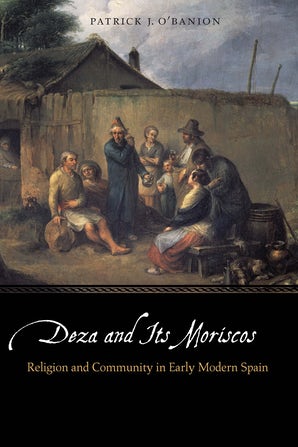
DEZA AND ITS MORISCOS : RELIGION AND COMMUNITY IN EARLY MODERN SPAIN. Patrick J. O’Banion (Series: Early Modern Cultural Studies)
Deza and Its Moriscos addresses an incongruity in early modern Spanish historiography: a growing awareness of the importance played by Moriscos in Spanish society and culture alongside a dearth of knowledge about individuals or local communities. By reassessing key elements in the religious and social history of early modern Spain through the experience of the small Castilian town of Deza, Patrick J. O’Banion asserts the importance of local history in understanding large-scale historical events and challenges scholars to rethink how marginalized people of the past exerted their agency.
Moriscos, baptized Muslims and their descendants, were pressured to convert to Christianity at the end of the Middle Ages but their mass baptisms led to fears about lingering crypto-Islamic activities. Many political and religious authorities, and many of the Moriscos’ neighbors as well, concluded that the conversions had produced false Christians. Between 1609 and 1614 nearly all of Spain’s Moriscos—some three hundred thousand individuals—were thus expelled from their homeland.
Contrary to the assumptions of many modern scholars, rich source materials show the town’s Morisco minority wielded remarkable social, economic, and political power. Drawing deeply on a diverse collection of archival material as well as early printed works, this study illuminates internal conflicts, external pressures brought to bear by the Inquisition, the episcopacy, and the crown, and the possibilities and limitations of negotiated communal life at the dawn of modernity.
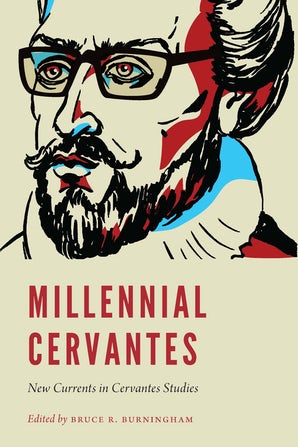
Millennial Cervantes : New Currents in Cervantes Studies Edited by Bruce R. Burningham (Series: New Hispanisms)
Millennial Cervantes explores some of the most important recent trends in Cervantes scholarship in the twenty-first century. It brings together leading Cervantes scholars of the United States in order to showcase their cutting-edge work within a cultural studies frame that encompasses everything from ekphrasis to philosophy, from sexuality to Cold War political satire, and from the culinary arts to the digital humanities.
Millennial Cervantes is divided into three sets of essays—conceptually organized around thematic and methodological lines that move outward in a series of concentric circles. The first group, focused on the concept of “Cervantes in his original contexts,” features essays that bring new insights to these texts within the primary context of early modern Iberian culture. The second group, focused on the concept of “Cervantes in comparative contexts,” features essays that examine Cervantes’s works in conjunction with those of the English-speaking world, both seventeenth- and twentieth-century. The third group, focused on the concept of “Cervantes in wider cultural contexts,” examines Cervantes’s works—principally Don Quixote—as points of departure for other cultural products and wider intellectual debates.
This collection articulates the state of Cervantes studies in the first two decades of the new millennium as we move further into a century that promises both unimagined technological advances and the concomitant cultural changes that will naturally adhere to this new technology, whatever it may be.
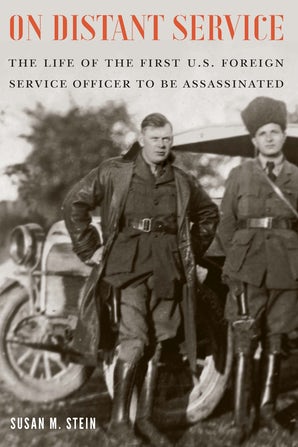
ON DISTANT SERVICE : THE LIFE OF THE FIRST U.S. FOREIGN SERVICE OFFICER TO BE ASSASSINATED. Susan M. Stein
On July 18, 1924, a mob in Tehran killed U.S. foreign service officer Robert Whitney Imbrie. His violent death, the first political murder in the history of the service, outraged the American people. Though Imbrie’s loss briefly made him a cause célèbre, subsequent events quickly obscured his extraordinary life and career.
Susan M. Stein tells the story of a figure steeped in adventure and history. Imbrie rejected a legal career to volunteer as an ambulance driver during World War I and joined the State Department when the United States entered the war. Assigned to Russia, he witnessed the October Revolution, fled ahead of a Bolshevik arrest order, and continued to track communist activity in Turkey even as the country’s war of independence unfolded around him. His fateful assignment to Persia led to his death at age forty-one and set off political repercussions that cloud relations between the United States and Iran to this day.
Drawing on a wealth of untapped materials, On Distant Service returns readers to an era when dash and diplomacy went hand-in-hand.
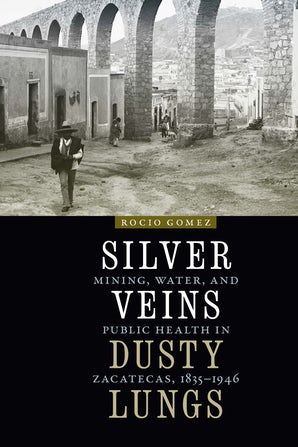
SILVER VEIN, DUSTY LUNGS : MONING, WATER, AND PUBLIC HEALTH IN ZACATECAS, 1835-1946. Rocio Gomez (Series: The Mexican Experience)
In Mexico environmental struggles have been fought since the nineteenth century in such places as Zacatecas, where United States and European mining interests have come into open conflict with rural and city residents over water access, environmental health concerns, and disease compensation.
In Silver Veins, Dusty Lungs, Rocio Gomez examines the detrimental effects of the silver mining industry on water resources and public health in the city of Zacatecas and argues that the human labor necessary to the mining industry made the worker and the mine inseparable through the land, water, and air. Tensions arose between farmers and the mining industry over water access while the city struggled with mudslides, droughts, and water source contamination. Silicosis-tuberculosis, along with accidents caused by mining technologies like jackhammers and ore-crushers, debilitated scores of miners. By emphasizing the perspective of water and public health, Gomez illustrates that the human body and the environment are not separate entities but rather in a state of constant interaction.
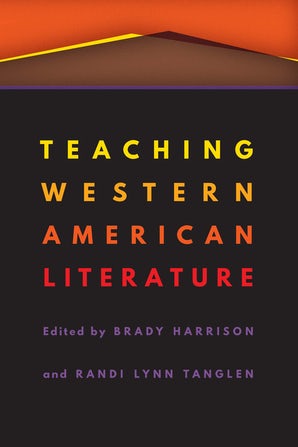
Teaching Western American Literature Edited by Brady Harrison and Randi Lynn Tanglen (Series: Postwestern Horizons)
In this volume experienced and new college- and university-level teachers will find practical, adaptable strategies for designing or updating courses in western American literature and western studies. Teaching Western American Literature features the latest developments in western literary research and cultural studies as well as pedagogical best practices in course development. Contributors provide practical models and suggestions for courses and assignments while presenting concrete strategies for teaching works both inside and outside the canon. In addition, Brady Harrison and Randi Lynn Tanglen have assembled insights from pioneering western studies instructors with workable strategies and practical advice for translating this often complex material for classrooms from freshman writing courses to graduate seminars.
Teaching Western American Literature reflects the cutting edge of western American literary study, featuring diverse approaches allied with women’s, gender, queer, environmental, disability, and Indigenous studies and providing instructors with entrée into classrooms of leading scholars in the field.
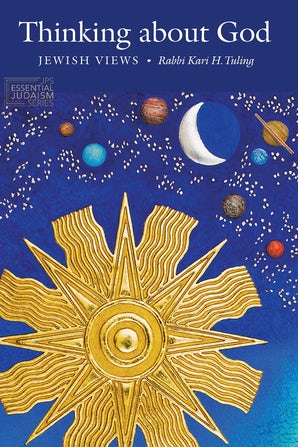
THINKING ABOUT GOD : JEWISH VIEWS. Rabbi Kari H. Tuling (Series: JPS Essential Judaism)
Who—or what—is God? Is God like a person? Does God have a gender? Does God have a special relationship with the Jewish people? Does God intervene in our lives? Is God good—and, if yes, why does evil persist in the world? In investigating how Jewish thinkers have approached these and other questions, Rabbi Kari H. Tuling elucidates many compelling—and contrasting—ways of thinking about God in Jewish tradition.
Thinking about God addresses the genuinely intertextual nature of evolving Jewish God concepts. Just as in Jewish thought the Bible and other historical texts are living documents, still present and relevant to the conversation unfolding now, and just as a Jewish theologian examining a core concept responds to the full tapestry of Jewish thought on the subject all at once, this book is organized topically, covers Jewish sources (including liturgy) from the biblical to the postmodern era, and highlights the interplay between texts over time, up through our own era.
A highly accessible resource for introductory students, Thinking about God also makes important yet challenging theological texts understandable. By breaking down each selected text into its core components, Tuling helps the reader absorb it both on its own terms and in the context of essential theological questions of the ages. Readers of all backgrounds will discover new ways to contemplate God.
**All book covers and synopses courtesy of University of Nebraska Press (https://www.nebraskapress.unl.edu/)
What’s Up Doc? New State Agency Publications at the Nebraska Library Commission
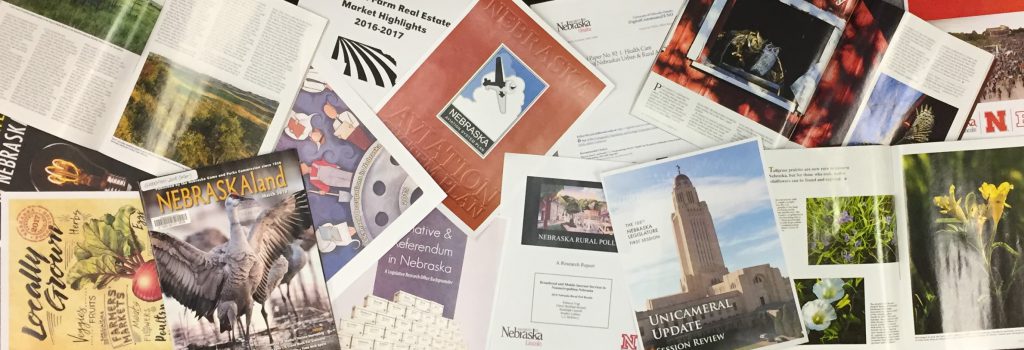
New state agency publications have been received at the Nebraska Library Commission for July and August 2020. Included are reports from the Nebraska Abstracters Board of Examiners, the Nebraska State Board of Public Accountancy, the Nebraska Accountability and Disclosure Commission, the Nebraska Commission for the Deaf and Hard of Hearing, and new books from the University of Nebraska Press, to name a few.
Most items, except the books from the University of Nebraska Press, are available for immediate viewing and printing by clicking on the highlighted link above, or directly in the .pdf below. You can read synopses of the books received from the University of Nebraska Press in the Book Briefs blogposts.
The Nebraska Legislature created the Nebraska Publications Clearinghouse in 1972, a service of the Nebraska Library Commission. Its purpose is to collect, preserve, and provide access to all public information published by Nebraska state agencies. By law (State Statutes 51-411 to 51-413) all Nebraska state agencies are required to submit their published documents to the Clearinghouse. For more information, visit the Nebraska Publications Clearinghouse page, contact Mary Sauers, Government Information Services Librarian; or contact Bonnie Henzel, State Documents Staff Assistant.
Friday Reads: The Lending Library, by Aliza Fogelson

What would you do if your town library closed for renovations, and the nearest library is an hour’s drive away? Read The Lending Library, by Aliza Fogelson to find out what one women did in just such a situation…
When the Chatsworth library closes indefinitely, Dodie Fairisle loses her sanctuary. How is a small-town art teacher supposed to cope without the never-ending life advice and enjoyment that books give her? Well, when she’s as resourceful and generous as Dodie, she turns her sunroom into her very own little lending library.
At first just a hobby, this lit lovers’ haven opens up her world in incredible ways. She knows books are powerful, and soon enough they help her forge friendships between her zany neighbors—and attract an exciting new romance.
But when the chance to adopt an orphaned child brings Dodie’s secret dream of motherhood within reach, everything else suddenly seems less important. Finding herself at a crossroads, Dodie must figure out what it means to live a full, happy life. If only there were a book that could tell her what to do…
I read The Lending Library, by Aliza Fogelson, in the Kindle format, and thoroughly enjoyed it. This is a lovely debut novel that teaches us how important libraries are to individuals, families, friends, and communities. Definitely an excellent read!
Book Briefs: New University of Nebraska Press Books at the Nebraska Publications Clearinghouse

The Nebraska Publications Clearinghouse receives documents every month from all Nebraska state agencies, including the University of Nebraska Press (UNP). Each month we will be showcasing the UNP books that the Clearinghouse receives. UNP books, as well as all Nebraska state documents, are available for checkout by libraries and librarians, for their patrons, in Nebraska.
Here are the UNP books the Clearinghouse received in May and June 2020:
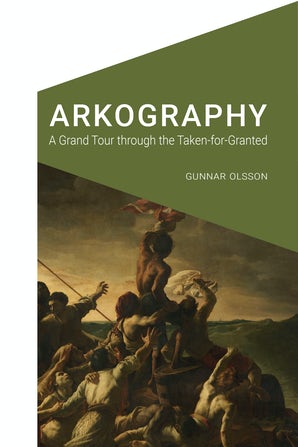
Arkography : A Grand Tour Through the Taken-for-Granted Gunnar Olsson (Series: Cultural Geographies + Rewriting the Earth)
In this fascinating text Gunnar Olsson tells the story of an arkographer, who with Pallas Athene’s blessings, travels down the Red River Valley, navigates the Kantian Island of Truth, and takes a house-tour through the Crystal Palace, the latter edifice an imagination grown out of Gunnael Jensson’s sculpture Mappa Mundi Universalis. This travel story carries the arkographer from the oldest creation epics extant to the power struggles of today—nothing less than a codification of the taken-for-granted, a mapping of the no-man’s-land between the five senses of the body and the sixth sense of culture. By constantly asking how we are made so obedient and predictable, the explorer searches for the present-day counterparts to the biblical ark, the chest that held the commandments and the rules of behavior that came with them—hence the term “arkography,” a word hinting at an as-yet-unrecognized discipline.
In Arkography Olsson strips bare the governing techniques of self-declared authorities, including those of the God of the Old Testament and countless dictators, the latter supported by a horde of lackeys often disguised as elected representatives and governmental functionaries. From beginning to end, Arkography is an illustration of how every creation epic is a variation on the theme of chaos turning into cosmic order. A palimpsest of layered meanings, a play of things and relations, identity and difference. One and many, you and me.

Blood in the Borderlands : Conflict, Kinship, and the Bent Family, 1821-1920 David C. Beyreis
The Bents might be the most famous family in the history of the American West. From the 1820s to 1920 they participated in many of the major events that shaped the Rocky Mountains and Southern Plains. They trapped beaver, navigated the Santa Fe Trail, intermarried with powerful Indian tribes, governed territories, became Indian agents, fought against the U.S. government, acquired land grants, and created historical narratives.
The Bent family’s financial and political success through the mid-nineteenth century derived from the marriages of Bent men to women of influential borderland families—New Mexican and Southern Cheyenne. When mineral discoveries, the Civil War, and railroad construction led to territorial expansions that threatened to overwhelm the West’s oldest inhabitants and their relatives, the Bents took up education, diplomacy, violence, entrepreneurialism, and the writing of history to maintain their status and influence.
In Blood in the Borderlands David C. Beyreis provides an in-depth portrait of how the Bent family creatively adapted in the face of difficult circumstances. He incorporates new material about the women in the family and the “forgotten” Bents and shows how indigenous power shaped the family’s business and political strategies as the family adjusted to American expansion and settler colonist ideologies. The Bent family history is a remarkable story of intercultural cooperation, horrific violence, and pragmatic adaptability in the face of expanding American power.
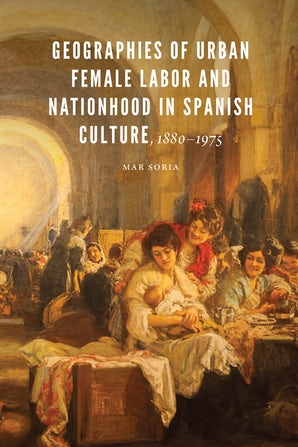
Geographies of Urban Female Labor and Nationhood in Spanish Culture, 1880-1975 Mar Soria (Series: New Hispanisms)
Mar Soria presents an innovative cultural analysis of female workers in Spanish literature and films. Drawing from nation-building theories, the work of feminist geographers, and ideas about the construction of the marginal subject in society, Soria examines how working women were perceived as Other in Spain from 1880 to 1975.
By studying the representation of these marginalized individuals in a diverse array of cultural artifacts, Soria contends that urban women workers symbolized the desires and anxieties of a nation caught between traditional values and rapidly shifting socioeconomic forces. Specifically, the representation of urban female work became a mode of reinforcing and contesting dominant discourses of gender, class, space, and nationhood in critical moments after 1880, when social and economic upheavals resulted in fears of impending national instability. Through these cultural artifacts Spaniards wrestled with the unresolved contradictions in the gender and class ideologies used to construct and maintain the national imaginary.
Whether for reasons of inattention or disregard of issues surrounding class dynamics, nineteenth- and twentieth-century Spanish literary and cultural critics have assumed that working women played only a minimal role in the development of Spain as a modern nation. As a result, relatively few critics have investigated cultural narratives of female labor during this period. Soria demonstrates that without considering the role working women played in the construction and modernization of Spain, our understanding of Spanish culture and life at that time remains incomplete.

Matters of Justice : Pueblos, the Judiciary, and Agrarian Reform in Revolutionary Mexico Helga Baltenmann (Series: The Mexican Experience)
After the fall of the Porfirio Díaz regime, pueblo representatives sent hundreds of petitions to Pres. Francisco I. Madero, demanding that the executive branch of government assume the judiciary’s control over their unresolved lawsuits against landowners, local bosses, and other villages. The Madero administration tried to use existing laws to settle land conflicts but always stopped short of invading judicial authority.
In contrast, the two main agrarian reform programs undertaken in revolutionary Mexico—those implemented by Emiliano Zapata and Venustiano Carranza—subordinated the judiciary to the executive branch and thereby reshaped the postrevolutionary state with the support of villagers, who actively sided with one branch of government over another.
In Matters of Justice Helga Baitenmann offers the first detailed account of the Zapatista and Carrancista agrarian reform programs as they were implemented in practice at the local level and then reconfigured in response to unanticipated inter- and intravillage conflicts. Ultimately, the Zapatista land reform, which sought to redistribute land throughout the country, remained an unfulfilled utopia. In contrast, Carrancista laws, intended to resolve quickly an urgent problem in a time of war, had lasting effects on the legal rights of millions of land beneficiaries and accidentally became the pillar of a program that redistributed about half the national territory.
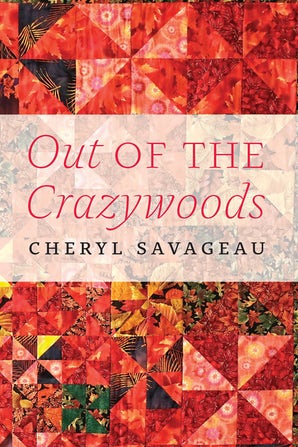
Out of the Crazywoods Cheryl Savageau (Series: American Indian Lives)
Out of the Crazywoods is the riveting and insightful story of Abenaki poet Cheryl Savageau’s late-life diagnosis of bipolar disorder. Without sensationalizing, she takes the reader inside the experience of a rapid-cycling variant of the disorder, providing a lens through which to understand it and a road map for navigating the illness. The structure of her story—impressionistic, fragmented—is an embodiment of the bipolar experience and a way of perceiving the world.
Out of the Crazywoods takes the reader into the euphoria of mania as well as its ugly, agitated rage and into “the lying down of desire” that is depression. Savageau articulates the joy of being consort to a god and the terror of being chased by witchcraft, the sound of voices that are always chattering in your head, the smell of wet ashes that invades your home, the perception that people are moving in slow motion and death lurks at every turnpike, and the feeling of being loved by the universe and despised by everyone you’ve ever known.
Central to the journey out of the Crazywoods is the sensitive child who becomes a poet and writer who finds clarity in her art and a reason to heal in her grandchildren. Her journey reveals the stigma and the social, personal, and economic consequences of the illness but reminds us that the disease is not the person. Grounded in Abenaki culture, Savageau questions cultural definitions of madness and charts a path to recovery through a combination of medications, psychotherapy, and ceremony.

Predictable Pleasures : Food and the Pursuit of Balance In Rural Yucatan Lauren A Wynne (Series: At Table)
The pursuit of balance pervades everyday life in rural Yucatán, Mexico, from the delicate negotiations between a farmer and the neighbor who wants to buy his beans to the careful addition of sour orange juice to a rich plate of eggs fried in lard. Based on intensive fieldwork in one indigenous Yucatecan community, Predictable Pleasures explores the desire for balance in this region and the many ways it manifests in human interactions with food. As shifting social conditions, especially a decline in agriculture and a deepening reliance on regional tourism, transform the manners in which people work and eat, residents of this community grapple with new ways of surviving and finding pleasure.
Lauren A. Wynne examines the convergence of food and balance through deep analysis of what locals describe as acts of care. Drawing together rich ethnographic data on how people produce, exchange, consume, and talk about food, this book posits food as an accessible, pleasurable, and deeply important means by which people in rural Yucatán make clear what matters to them, finding balance in a world that seems increasingly imbalanced.
Unlike many studies of globalization that point to the dissolution of local social bonds and practices, Predictable Pleasures presents an array of enduring values and practices, tracing their longevity to the material constraints of life in rural Yucatán, the deep historical and cosmological significance of food in this region, and the stubborn nature of bodily habits and tastes.

The Storied Landscape of Iroquoia : History, Conquest, and Memory in the Native Northeast Chad L. Anderson (Series: Borderlands and Transcultural Studies)
The Storied Landscape of Iroquoia explores the creation, destruction, appropriation, and enduring legacy of one of early America’s most important places: the homelands of the Haudenosaunees (also known as the Iroquois Six Nations). Throughout the late seventeenth, eighteenth, and early nineteenth centuries of European colonization the Haudenosaunees remained the dominant power in their homelands and one of the most important diplomatic players in the struggle for the continent following European settlement of North America by the Dutch, British, French, Spanish, and Russians. Chad L. Anderson offers a significant contribution to understanding colonialism, intercultural conflict, and intercultural interpretations of the Iroquoian landscape during this time in central and western New York.
Although American public memory often recalls a nation founded along a frontier wilderness, these lands had long been inhabited in Native American villages, where history had been written on the land through place-names, monuments, and long-remembered settlements. Drawing on a wide range of material spanning more than a century, Anderson uncovers the real stories of the people—Native American and Euro-American—and the places at the center of the contested reinvention of a Native American homeland. These stories about Iroquoia were key to both Euro-American and Haudenosaunee understandings of their peoples’ pasts and futures.
For more information about The Storied Landscape of Iroquoia, visit storiedlandscape.com.

Women and Community in Medieval and Early Modern Iberia Edited and with an introduction by Michelle Armstrong-Partida, Alexandra Guerson, and Dana Wessell Lightfoot ; Series: Women and Gender in the Early Modern World
Women and Community in Medieval and Early Modern Iberia draws on recent research to underscore the various ways Iberian women influenced and contributed to their communities, engaging with a broader academic discussion of women’s agency and cultural impact in the Iberian Peninsula. By focusing on women from across the socioeconomic and religious spectrum—elite, bourgeois, and peasant Christian women, Jewish, Muslim, converso, and Morisco women, and married, widowed, and single women—this volume highlights the diversity of women’s experiences, examining women’s social, economic, political, and religious ties to their families and communities in both urban and rural environments.
Comprised of twelve essays from both established and new scholars, Women and Community in Medieval and Early Modern Iberia showcases groundbreaking work on premodern women, revealing the complex intersections between gender and community while highlighting not only relationships of support and inclusion but also the tensions that worked to marginalize and exclude women.
**All synopses courtesy of University of Nebraska Press (https://www.nebraskapress.unl.edu/)
What’s Up Doc? New State Agency Publications at the Nebraska Library Commission

New state agency publications have been received at the Nebraska Library Commission for May and June 2020. Included are audit reports from the Nebraska Auditor of Public Accounts, reports from the Nebraska Department of Economic Development, and new books from the University of Nebraska Press, to name a few.
Most items, except the books from the University of Nebraska Press, are available for immediate viewing and printing by clicking on the highlighted link above, or directly in the .pdf below. You can read synopses of the books received from the University of Nebraska Press in the Book Briefs blogposts.
The Nebraska Legislature created the Nebraska Publications Clearinghouse in 1972, a service of the Nebraska Library Commission. Its purpose is to collect, preserve, and provide access to all public information published by Nebraska state agencies. By law (State Statutes 51-411 to 51-413) all Nebraska state agencies are required to submit their published documents to the Clearinghouse. For more information, visit the Nebraska Publications Clearinghouse page, contact Mary Sauers, Government Information Services Librarian; or contact Bonnie Henzel, State Documents Staff Assistant.
Free ALA webinar: “Last Chance for a Complete Count”

| ALA is offering a webinar for library staff: 2020 Census: Last Chance for a Complete Count, on July 8 at 2 pm ET. Registration is free. After the session, the recording will be posted at ala.org/census. New guide on adapting census outreach in response to COVID-19: ALA released a new publication, “Libraries and the 2020 Census: Adapting Outreach in Response to COVID-19 (PDF).” The free guide explains changes to the 2020 Census process and highlights opportunities for libraries to adapt census outreach activities. Check your community’s response rate: How does your area compare in its response rate to date? Which neighborhoods are lagging behind? Find current data to inform your outreach and messages on the 2020 Census Response Rate Map or the Census 2020 Hard to Count Map. Share your event on the Census Counts calendar: Is your library planning a 2020 Census event (including virtual events)? Submit it to the national Census Counts calendar. Check the calendar for other events from partners in your community. |
Accreditation Suspended, Data Available
This year, the accreditation cycle has been suspended due to COVID-19. However, our FY2019 data, what would have been used on your accreditation applications, is available. For those libraries that might be planning and want to see how you compare to what would have been your peers, contact me and I will send you your customized data set. Keep in mind that if you are up for re-accreditation next year, your peers may change. Typically, your peers are libraries that are within 15% of your legal service area. While there may be some exceptions to this, generally speaking those are the libraries that yours is compared to.
Reading For Change: Anti-Racism Titles in Our Book Club Kit Collection
Earlier this week, the New York Public Library’s Schomburg Center for Research in Black Culture posted their Black Liberation Reading List. This is among many anti-racism reading lists publicized in recent days (here, here, and here) but I’m choosing to highlight this list because the Schomburg Center has focused on the Black experience, history, and culture for 95 years. Their list of 95 books includes both fiction and nonfiction.
If your patrons or book club groups are interested in these titles, we have a selection of them in our Book Club Kit collection:
- The Autobiography of Malcolm X by Malcolm X
- The Bluest Eye by Toni Morrison
- I Know Why the Caged Bird Sings by Maya Angelou
- Just Mercy by Bryan Stevenson
- A Raisin in the Sun by Lorraine Hansberry
- Their Eyes Were Watching God by Zora Neale Hurston
- The Underground Railroad by Colson Whitehead
- The Warmth of Other Suns by Isabel Wilkerson
You can find these books and similar titles for all ages on our Book Club Kit page: http://nlc.nebraska.gov/ref/bookclub/, by choosing “Black lives” in the Genre drop down menu.
We have also gathered a number of resources for library patrons and the general public to learn about social issues on NebraskAccess.
Niche Academy is Open!
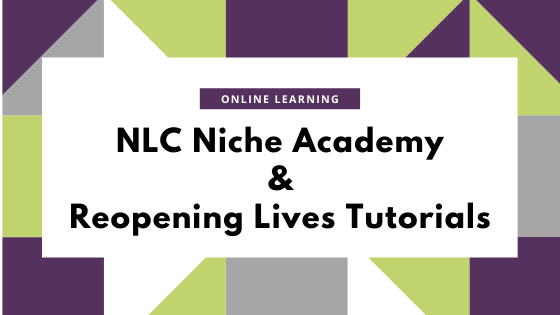
Two new online learning resources are now available!
First, the Nebraska Library Commission Academy is available to librarians as a thirty-day trial through Niche Academy. Lessons include topics such as:
- Code of Ethics for New Directors
- 10 Strategies for Community Organizing in Libraries
- 2020 United States Census
- Virtual Programming: Working with Presenters and Performers
- Research Essentials
Please check it out and let me know what you think! Each lesson is eligible for 1 CE credit for those enrolled in the Nebraska Public Librarian Certification program, just submit a CE Activity Report form when completed.
Second, the Reopening Lives Academy is a collaborative project between Niche Academy and librarians all over the United States to help answer patron questions as libraries work on reopening.
…many of us are anticipating a surge of patrons with questions about unemployment, taxes, and financial resources. We anticipate questions about public and personal health, and how the CARES act (and other legislation) will affect or help small businesses and entrepreneurs.
Niche Academy
These short tutorials are intended to help librarians and patrons answer these many different questions and provide quick resources with quality information on topics such as COVID-19, wearing masks, mental health, and writing resumes.
If you want to learn more about the collaborative project (or are interested in participating), there is more information posted on the Niche Academy blog.
2019 Public Library Survey Data is Now Available
 The 2019 FY public library survey data is now available on the NLC website. This is preliminary data (meaning that it has not yet been certified by IMLS) so keep in mind that it is subject to change. Thanks to all of you who submitted your statistics. Historical data (back to 1999) is also available on our website. The next survey cycle begins in November, but you should be collecting those statistics now. If you are a new library director, check out the Bibliostat guide.
The 2019 FY public library survey data is now available on the NLC website. This is preliminary data (meaning that it has not yet been certified by IMLS) so keep in mind that it is subject to change. Thanks to all of you who submitted your statistics. Historical data (back to 1999) is also available on our website. The next survey cycle begins in November, but you should be collecting those statistics now. If you are a new library director, check out the Bibliostat guide.
Reopening Your Library During the Pandemic

Is your library reopening to the public, or looking for guidance on reopening?
We’ve compiled recommendations and guidance from local and national organization, as well as example of policies and procedures being used by other Nebraska libraries here: http://nlc.nebraska.gov/libman/pandemic4libraries.aspx
If you’ve not yet told us that your library is reopening or modifying services for the pandemic, please fill out our form: https://docs.google.com/forms/d/e/1FAIpQLSe5AurxbSHsu5gy5sig7uHWkkQYeRG3EfT7l2ArfmbPTtlx-A/viewform.
A spreadsheet of Nebraska libraries closing, reopening, and modifying services can be found here: https://docs.google.com/spreadsheets/d/e/2PACX-1vQhzPpcpf_BAB_7wbDegLdjvfFX84AbGgRVAcIzrp-DYBIJUnKIaake5d1jKIRcFVW4qTPVwchtK5SV/pubhtml
And don’t forget our other resources for libraries and their patrons during this time: http://nlc.nebraska.gov/libman/pandemic.aspx
The Central Plains Libray System (CPLS) has resources too!
http://libraries.ne.gov/cpls/
Posted in General, Information Resources, Library Management
Tagged covid-19, pandemic, reopening, reopening plan
Leave a comment
Four Ways New Technology Is Revolutionizing the 2020 Census

From scribbled answers in 1790 to online responses in 2020, innovation has always been part of the Census. The Census Bureau has always been a leader in using, adapting and developing new technologies, but the 2020 Census will be the most sophisticated and high tech yet.
The census began in 1790 with collected information handwritten by U.S. Marshals visiting outposts in every corner of the new nation. Every decade since, the ways the U.S. Census Bureau has tried to meet its goal of counting every person living in the United States have undergone changes as dramatic as the growth of the nation itself.
Through the centuries, the decennial count progressed from in-person collections of handwritten answers to mass mailings of paper questionnaires in 1970. Among other changes along the way: creation of an electrical punch card tabulator for the 1890 Census and the first use by a government agency of the world’s first modern computer – the UNIVAC 1 – for the 1950 Census. It was developed by engineers John W. Mauchly and J. Presper Eckert, whose corporation was a division of Remington Rand.
In the previous century, Herman Hollerith, a former Census Office employee, invented a punch card tabulating machine used by the Census Bureau from the 1890 Census forward. Hollerith founded the Tabulating Machine Company, which eventually became International Business Machines (IBM).
America Counts spoke with Robert Colosi, a mathematical statistician in the Census Bureau’s Decennial Statistics Studies Division, about ways technology is revolutionizing the census.
He shared four specific changes that have had a major impact on how the Census Bureau counts everyone once, only once, and in the right place.
Innovation 1: Using Satellite Imagery to Check Addresses
Before the Census Bureau can count every person in the country, it must first collect addresses for every housing unit. One way the Census Bureau uses this address list is to mail census materials, including invitations to respond online, by phone or by mail.
Census Bureau employees used to “canvass” neighborhoods in person, jotting down new addresses and correcting old ones on paper.
This long-running operation, known as Address Canvassing, is one of the ways the Census Bureau updates its Master Address File or MAF. The Census Bureau also works with the United States Postal Service (USPS) to confirm already existing addresses on file.
Address canvassing was costly and time-consuming. Employees traveled a total of 137 million miles to update the MAF before the 2010 Census.
“The number of miles we traveled was astronomical,” Colosi said. “We’re not going to do that for the 2020 Census.”
In 2015, the Census Bureau began using aerial images from a network of satellites.
The Census Bureau developed computer software that allows employees in offices to compare satellite images from 2010 to new ones taken in real time. This helps them identify new houses, apartment buildings and other units to verify in the traditional Address Canvassing operation.
Thanks to the new In-Office Address Canvassing system, census workers reviewed 100% of all addresses in the United States for the 2020 Census and validated 65% in the office, removing them from the in-field workload.
That means workers needed to canvas fewer neighborhoods in person, saving time and money.
Address listers or canvassers hit the streets in August 2019 and completed the operation two months later, on track for the 2020 Census.
Innovation 2: Introducing Online Self-Response
The 2020 Census is the first time everyone has the option to respond to the census online as well as by phone or mail.
The Census Bureau has an Internet Self-Response tool designed to make it easy to complete the questionnaire online and keep responses secure. Directions for responding online will be included in letters, postcards and other mailings sent to most homes beginning in mid-March.
Every response submitted on the internet is encrypted. That means data are changed into a code that only Census Bureau data analysts can read. Responses travel through a secure cloud computer network and the Census Bureau locks them in a “digital vault”.
The Internet Self-Response instrument, the website for completing the census online, is available in English and 12 other languages.
Census Bureau employees, called census response representatives will also provide computers and tablets for access to the Internet Self-Response tool at places like libraries, community centers, health care centers and places of worship. This is particularly helpful in rural and other areas with limited or no internet access.
Innovation 3: Introducing Mobile Devices to Enumeration
From collecting census responses and job applications to storing questionnaires, the Census Bureau has used millions of pieces of paper to gather and file information. Now it relies much more on technology – and much less on paper.
In 2020, census takers who go door-to-door to help people respond will collect information on smartphones using a custom application created by the Census Bureau.
“The Systems Engineering and Integration Team created 52 systems in our ‘system of systems,’” Colosi said. “There’s a whole group of systems related to that one contract of enumeration and operations control. All of it was built by Census Bureau staff and contractors.”
To protect privacy, we encrypt all data and devices require two-factor authentication to be unlocked.
When a device connects to the internet, encrypted data immediately transmits to the Census Bureau’s digital vault – and is no longer on the device. Encrypted data are only stored on the devices until they connect to the internet.
Software in the smartphones also provides specific routes for census takers to follow to visit homes. Optimizing routes in this way helps census takers do their jobs more efficiently.
If a device is lost or stolen, the Census Bureau will remotely wipe it clean of all applications and information.
Innovation 4: New Ways to Protect Data
The Census Bureau is the leading source of quality data about the nation’s people and economy in its many surveys and programs, including the 2020 Census.
Opportunities to share and protect its data continue to grow with technology and innovation, particularly through data mashups.
Data mashups are algorithms that combine different data sources to expand graphical understanding of the data but can also find the origin of a particular set of data.
To protect against that, the Census Bureau has developed processes to protect its data from people who might try to make such mashups. Its Disclosure Avoidance System helps prevent improper disclosure of data. This addition is one of several advances the Census Bureau has made to safeguard an individual’s data.
“When we produced products in the old days, we didn’t have super high-tech and savvy users,” Colosi said. “The idea of computing data mashups to try and combine different data sources to find individual responses was not common. Now it is.”
All responses to the 2020 Census are confidential and protected by law. Title 13 of the Federal Code prohibits the Census Bureau from publishing or disclosing any private information, including names, addresses and telephone numbers.
“Our cybersecurity meets the latest, highest standards for protecting your information,” Census Bureau Chief Information Officer Kevin Smith said. “We work with industry experts to continually review and refine our approach to make sure we are staying ahead of threats and ensuring quick response. From the moment we collect your responses, our goal — and legal obligation — is to keep them safe.”
Census Bureau employees take an oath to keep your answers confidential. Violators face up to five years in prison and $250,000 in fines.
Posted in Books & Reading, Census, Education & Training, General, Information Resources, Technology, What's Up Doc / Govdocs
Tagged census
Leave a comment
Census Bureau Launches COVID-19 Data Hub
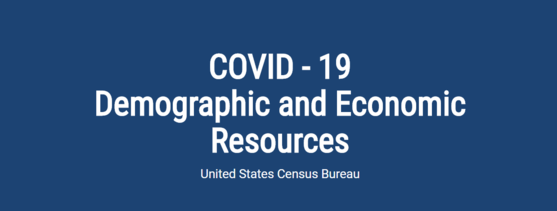  The U.S. Census Bureau has released a new resource page on Census.gov to help federal The U.S. Census Bureau has released a new resource page on Census.gov to help federal agencies, businesses, and communities make decisions related to the COVID-19 pandemic. Similar to the Census Bureau’s resources pages created during natural disasters, this resource page includes information on population demographics, economic indicators and businesses. Learn More It features a new interactive data hub that centralizes already-released data from the American Community Survey and the County Business Patterns program to facilitate users’ access to data useful in pandemic-related decision making. The data hub, released as a beta version, will be updated periodically as the situation changes and as feedback is received from users.  You can sign up for COVID-19 Data Hub Updates here. You can sign up for COVID-19 Data Hub Updates here.  |
Posted in Books & Reading, Census, Education & Training, General, Information Resources, Technology, What's Up Doc / Govdocs
Tagged census
Leave a comment
2020 Census Updates

Nebraska is still FIRST in Census responses in our region! Here’s all the latest news from the Census Bureau:
Posted in Books & Reading, Census, Education & Training, General, Information Resources, What's Up Doc / Govdocs
Tagged census
Leave a comment
What’s Up Doc? New State Agency Publications at the Nebraska Library Commission

New state agency publications have been received at the Nebraska Library Commission for March and April 2020. Included are annual reports from a variety of Nebraska state agencies, economic development reports from the Nebraska Public Power District, Audit reports from the Nebraska Auditor of Public Accounts, and new books from the University of Nebraska Press, to name a few.
Most items, except the books from the University of Nebraska Press, are available for immediate viewing and printing by clicking on the highlighted link above, or directly in the .pdf below. You can read synopses of the books received from the University of Nebraska Press in the Book Briefs blogposts.
The Nebraska Legislature created the Nebraska Publications Clearinghouse in 1972, a service of the Nebraska Library Commission. Its purpose is to collect, preserve, and provide access to all public information published by Nebraska state agencies. By law (State Statutes 51-411 to 51-413) all Nebraska state agencies are required to submit their published documents to the Clearinghouse. For more information, visit the Nebraska Publications Clearinghouse page, contact Mary Sauers, Government Information Services Librarian; or contact Bonnie Henzel, State Documents Staff Assistant.

